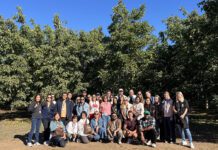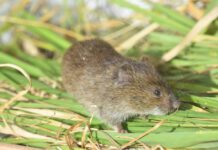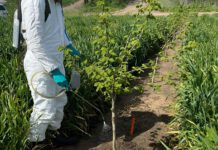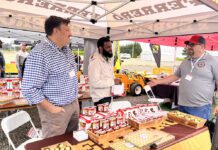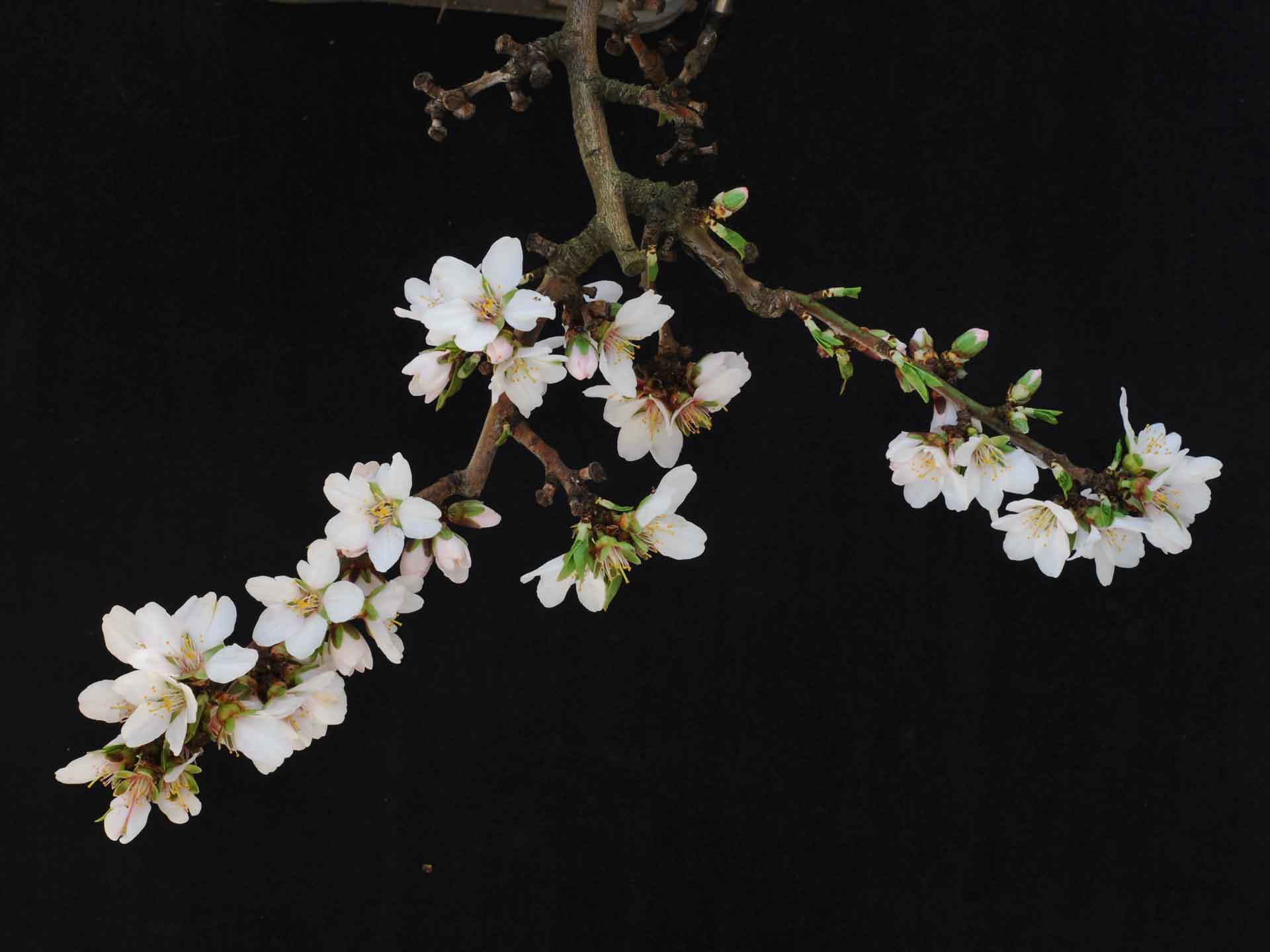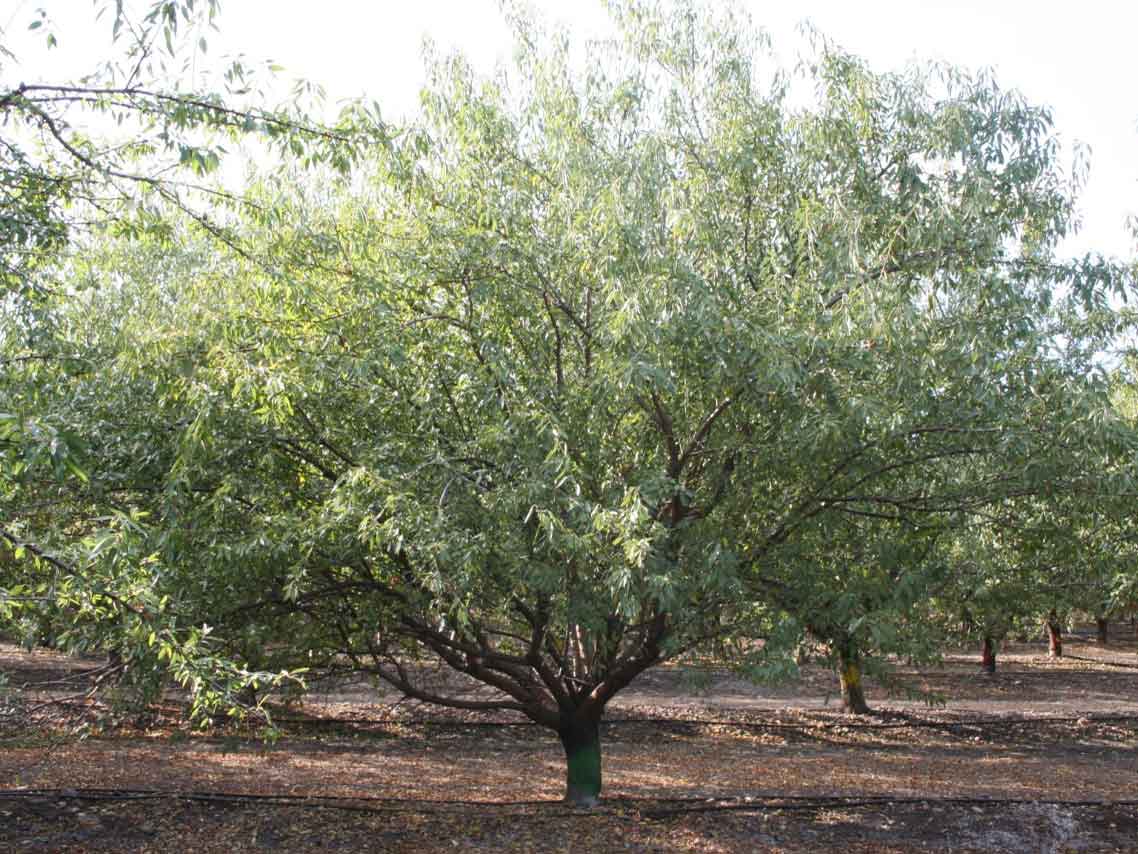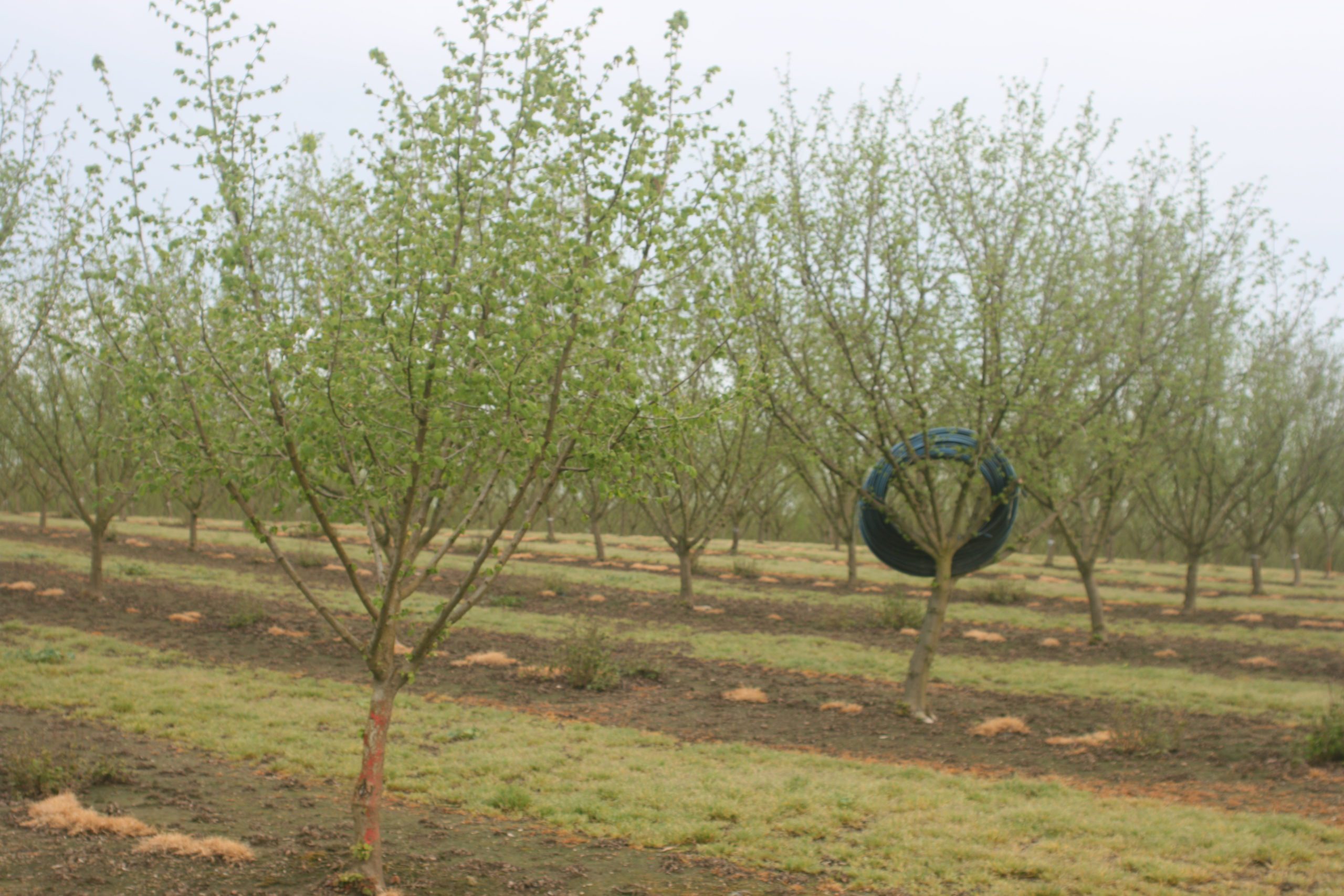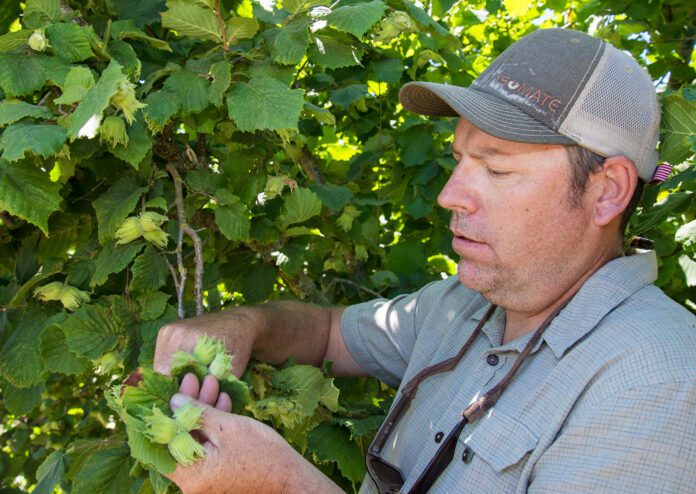
Listen to the audio version of this article. (Generated by A.I.)
For a decade, he’s been the go-to guy for growers with hazelnut questions. Now, Nik Wiman is on track to occupy an endowed hazelnut production research professorship at Oregon State University, thanks to an effort spearheaded by Larry George of George Packing Company and other industry donors.
Larry George led the years-long drive to fund the endowment, urging dozens of growers and packers who also contributed to the cause, said Zach Christensen, a Yamhill County grower on the commission’s Hazelnut Marketing Board. Commission funds come from an assessment on nuts handled by more than 1,000 growers in Oregon, but the endowed professorship is also funded by the Oregon Hazelnut Commission, the Hazelnut Bargaining Association and donations from individual growers and industry partners, Wiman said.
The endowment will go into effect next year, promising one aspect of stability for hazelnut growers at a time when federal agricultural research funding is tenuous. The endowment will help maintain Wiman’s research program, keeping it focused on local needs and priorities.
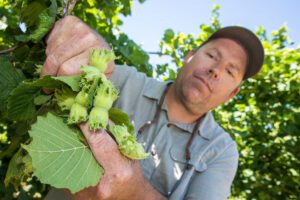
“There’s a huge need for research and extension in the hazelnut industry,” Wiman said, noting that in the past 10 years, the acreage in hazelnut orchards in Oregon has tripled to more than 96,000 acres. “People are thirsty for research and extension services in the hazelnut industry.”
Worldwide demand for the Oregon tree nut will continue to grow, despite lean years and low prices, he said. “We’re in a really strong position.”
He earned a Ph.D. in entomology at Washington State University, where he specialized in tree fruit pest management. Wiman was hired in 2012 by OSU Extension Service as a postdoc and research professor to work on the problem of invasive brown marmorated stink bugs, a statewide pest that damages a variety of high-value specialty crops including hazelnuts. His work there led him to work with farmers on parasitoid wasps. Both pests continue to plague Northwest orchards, but today, research promises to reduce their impact.
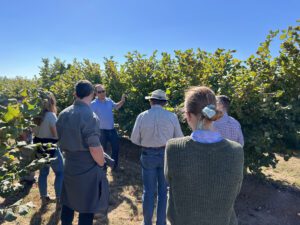
Born in Colorado to a geologist father and artist mother, Wiman left to attend college at Montana State University, attracted to studies in the natural world including biology, rangeland management and entomology. While at Montana State, he met and married Michele, a science educator. The couple live in Corvallis with their two girls, 11 and 14.
Wiman began his current position in the College of Agriculture and Division of Extension in late 2015. The position was moved to the North Willamette Research and Extension Center after the late horticulturist Jeff Olsen died in 2014.
He began work in hazelnuts at a time when new varieties were being planted to combat the Eastern Filbert Blight “at an incredible rate,” he said.
As new growers moved into the industry, there was huge demand for information, and a lot of learning took place as the industry adapted to new varieties and more modern farming practices. “Finally, we have a better handle on how to help people,” he said.
Challenges change with the wind. Markets, climates, labor availability, technology, pests and politics impact growers and, in turn, create new studies to keep growers viable. Wiman’s work includes experimental projects in the lab, at field plots on private orchards, and at OSU Extension’s research station near Aurora. Experiments are looking at mechanized canopy management and pruning, nutrient management, double-density and high-density plantings, dwarf trees, grafting, irrigation and pest control.
“There are always new problems. New diseases and insects and mysterious issues that will take several lifetimes of research to solve,” Wiman said.






